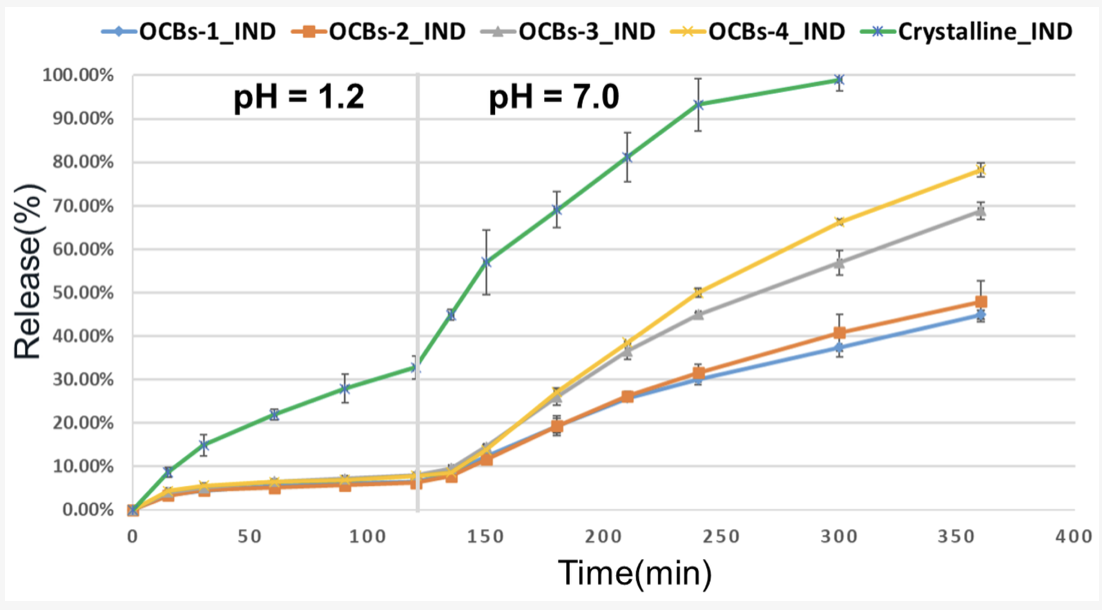The development of controlled drug delivery systems based on bio-renewable materials is an emerging strategy. In this work, a controlled drug delivery system based on mesoporous oxidized cellulose beads (OCBs) was successfully developed by a facile and green method. The introduction of the carboxyl groups mediated by the TEMPO(2,2,6,6-tetramethylpiperidine-1-oxyradical)/NaClO/NaClO2 system presents the pH-responsive ability to cellulose beads, which can retain the drug in beads at pH = 1.2 and release at pH = 7.0. The release rate can be controlled by simply adjusting the degree of oxidation to achieve drug release at different locations and periods. A higher degree of oxidation corresponds to a faster release rate, which is attributed to a higher degree of re-swelling and higher hydrophilicity of OCBs. The zero-order release kinetics of the model drugs from the OCBs suggested a constant drug release rate, which is conducive to maintaining blood drug concentration, reducing side effects and administration frequency. At the same time, the effects of different model drugs and different drug-loading solvents on the release behavior and the physical state of the drugs loaded in the beads were studied. In summary, the pH-responsive oxidized cellulose beads with good biocompatibility, low cost, and adjustable release rate have shown great potential in the field of controlled drug release.
Molecules 2021, 26(4), 1030; https://doi.org/10.3390/molecules26041030
Keywords: TEMPO oxidation; cellulose beads; pH-responsive; controlled drug delivery systems; zero-order release; indomethacin; fenofibrate

where to purchase accutane online accutane generic 100 mg accutane
canadian prescription
best online drugstore
online meds without presxription
online drugstore service canada
online pharmacy store
legit canadian online pharmacy
canadian online pharmacy reviews